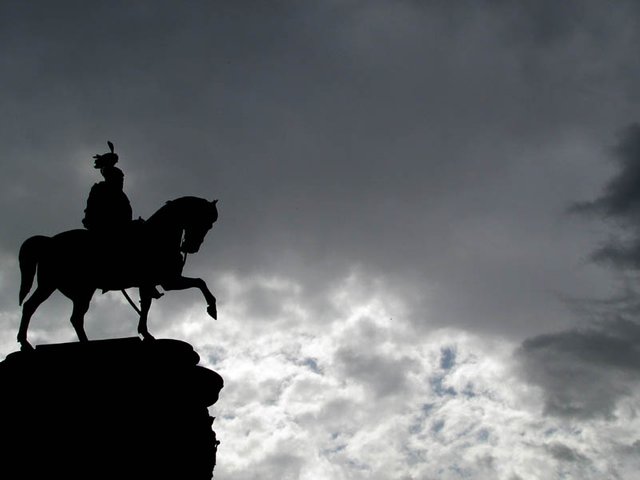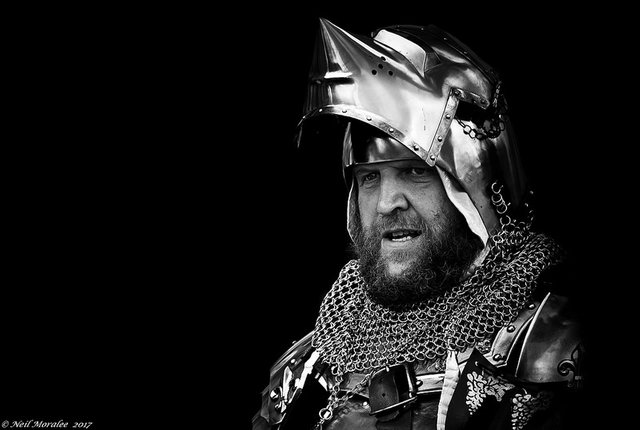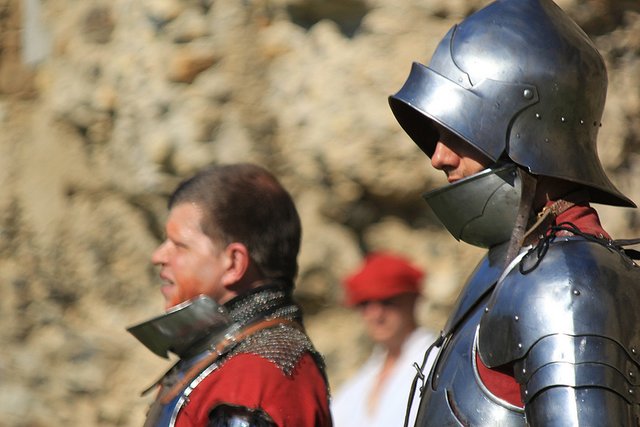The legend of Prince Albrecht von Wallenstein
"And his own words," tell this beast ", would become a loud adage if they were not met in most cases" - means about the formation of the image and the myth of Albrecht Wallenstein over the years.
Great historical events, which scholars later attribute to epochal significance, are usually inseparable from certain "outstanding" individuals.
Every breakthrough scientific discovery, righteous claim, or bloody victory, have their fathers, whose names find their place in the memory of many descendants.
The long-lasting conflict which struck Europe in the 17th century, and later called the Thirty Years' War, also promoted or acclaimed a number of figures whose participation in the wartime turmoil was not negligible.

Statesmen, such as King Gustav Adolf, Emperor Ferdinand II, Cardinal Richelieu, or Prince Albrecht von Wallenstein, have found their place in the consciousness of Europeans, and even in today's mass culture as heroes, tyrants, traitors, madmen, or murderers who sometimes join all these assessments in one person.
Exactly the situation is the case of the person of the Prince of Frýdlant, Albrecht Wacław of Wallenstein, whom at the time of his death was called the "hideous, perjure, old, rebel beast", just a few years later to hear from the lips of Cardinal Richelieu "faithful servant" cruelly treated by his master.

If we look at the first authentic portrait of Albrecht Wallenstein, created around 1620, we will see a young man who does not look particularly interested in his appearance. A calm, richly dressed nobleman, armed with a rapier, holding a regimentarian in his left hand.
Though Wallenstein was undoubtedly a well-known figure, probably the fame that preceded him was not particularly pleasing to him. According to the Czech historian Josef Janáček, during the appearance of the Czech states against the Habsburgs, Wallenstein not only disgracedly changed sides during the conflict, but after the murder of one of the colonels he committed the theft of 26,000 thalers from the regiment, and together with a handful of musketeers he fled to Vienna, counting for the emperor's favor.
Bad fame also brought him the acceptance in the donation of the imperial lands taken away from the Czech insurgents, and, unjust, rumors of

"a marriage for money with an old woman" - Lucrezia Nekšówna from Landek (in fact only one year older than Wallenstein).
The words of the commander of the army of the Czech states Count Henryk Thurna, who at the time called Wallenstein the "beast who lost her honor and soul", can complement the image of the late Prince Frydland.
The picture of Albrecht von Wallenstein in 1631 is best attested to how much this image has changed in favor of the prince in the early 1930s.
An unknown painter does not present us a peaceful old man, but a real god of war. The Generalissimo of the powerful Imperial Army, clad in glistening plate armor, casts the viewer a marvelous look from the height of a black horse. In fact, this portrait was created at the moment of the top power of the Prince of Frýdlant. In addition to extensive and rich estates, Wallenstein enjoyed the reputation of the most trusted soldier of Emperor Ferdinand II, a perfect organizer, and even (though many think wrong) the perfect leader and author of imperial victories over Protestants.
Extremely interesting from a psychological point of view is the way in which the Prince of Fryd was connected with a discipline that seemed even cruel, with the adoration of his subordinates. According to Josef Janáček, the mouth of the imperial chief was most often heard the words "this beast," and Wallenstein himself was just as cruel to the enemy or the population of the occupied territories, as well as to his own subordinates.
All omissions, especially desertion or resignation from the battlefield, were punishable by death, and the commander's family and protections of the powerful did not affect the commander's position. However, the prince managed to win over subordinates thanks to "looking through his fingers" at the plunder of the Imperial soldiers, as well as the addictive policy of rewards and promotions.

And although it was the period of the first command over the imperial army that should bring Wallenstein the greatest fame, his greatest fallacy was recorded in mass consciousness. News of the murder of the generalissimo at the behest of the emperor, in a short time spanned the whole of Europe, arousing a truly tabloid sensation.
According to Janáček, every printer of that time tried to print a report on the so-called Chebska Street, and the artists outdid themselves in the creation of copperplates showing the passion and death of the Prince of Frýdlant. The publishing house "Theatrum Europaneum" published a series of copperplate engravings by Mateusz Merian, showing the destruction of Wallenstein and his faithful officers.
However, the Prince of Frydland is not shown as a traitor who receives due punishment for his deed. It is the degenerated bombers who carry out a cruel slaughter of unarmed victims who, after all, attempt to defend their worship. In this case, it is worth to combine Merian's copperplate with the account of one of the conspirators, Ottavio Picolomini. At the moment of death, Wallenstein was to be an old-aged diseased man, dressed only in a nightgown, while Merian presented us with a richly clad old man trying to save himself from an aggressive assailant. Also worth mentioning are two poems created just a few years after the prince's death - People's song about Wallenstein, praising the heroism and virtues of "Wallenstein Frydland" and V. Wallenstein's song V. K. Kocmánek, stylized as the lament of the hero-injured by the emperor.
Sources:
Kocmánek V. K., Pieśń o Wallensteinie, w: J. Janáček, Śmierć Wallensteina, Katowice 1988.
Ludowa pieśń o Wallensteinie, w: J. Janáček, Śmierć Wallensteina, Katowice 1988.
Merian M., Cykl miedziorytów o zbrodniach chebskich z 1635 roku, w: J. Janáček, Śmierć Wallensteina, Katowice 1988.
Pilotty K. von, Astrolog Senni nad ciałem Wallensteina, zbiory Bayerische Staatsgemäldesammlungen.
Portret Albrechta Wallensteina na koniu z 1631 roku, autor nieznany, zbiory pałacu Wallensteina w Pradze.
Portret Albrechta Wallensteina z około 1620 roku, autor nieznany, zbiory zamku frydlandzkiego.
Literature:
Ivanow M., Pitival czeski albo królobójstwa, Warszawa 1985.
Janáček J., Śmierć Wallensteina, Katowice 1988.
Lubowski E., Wallenstein, (05.12.2015 r.).